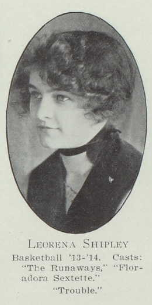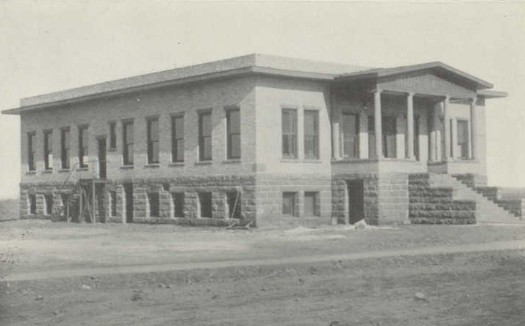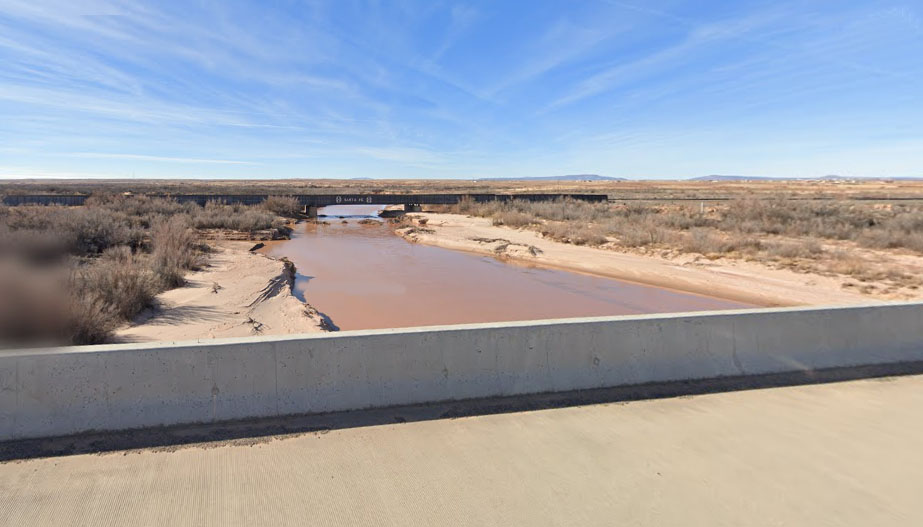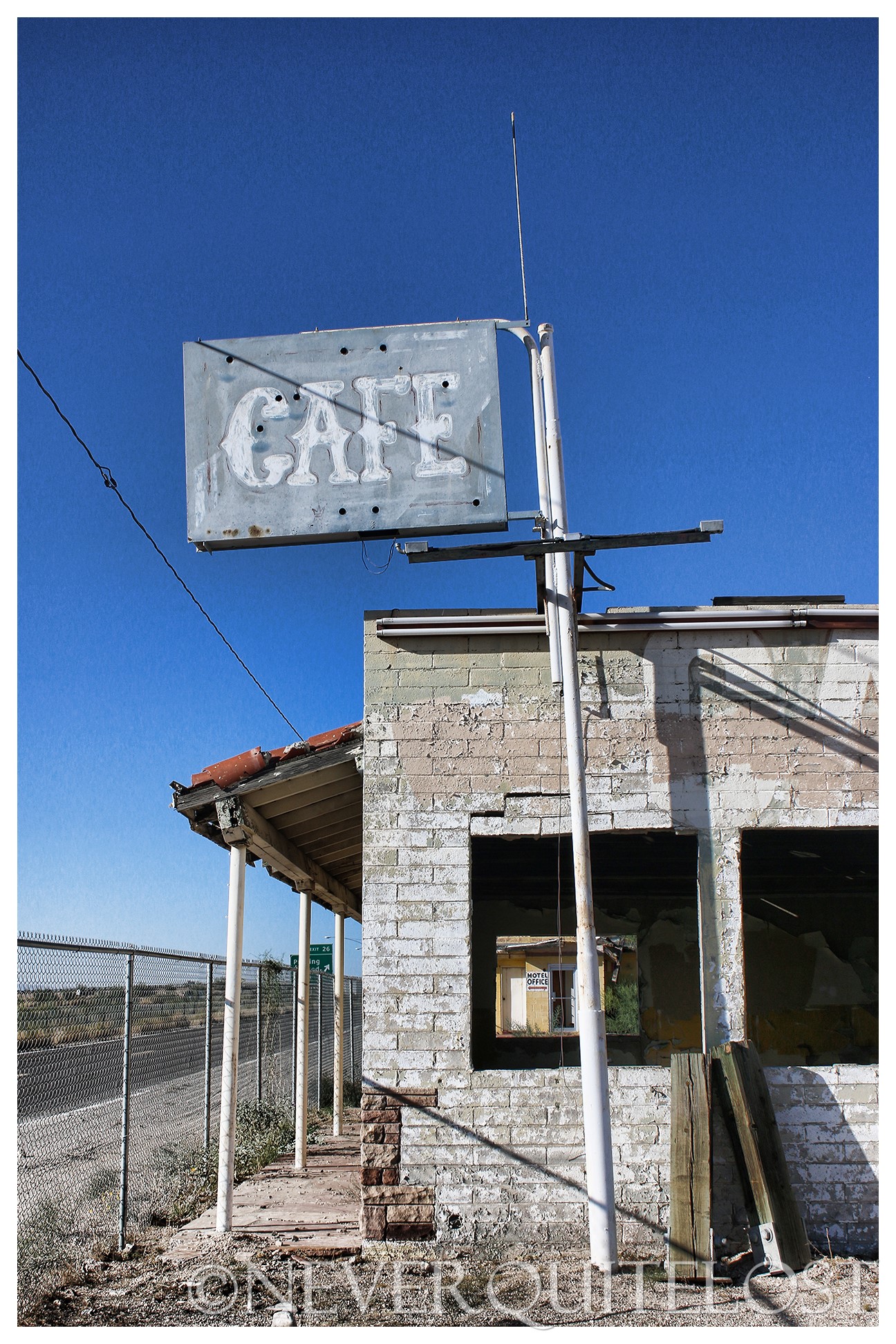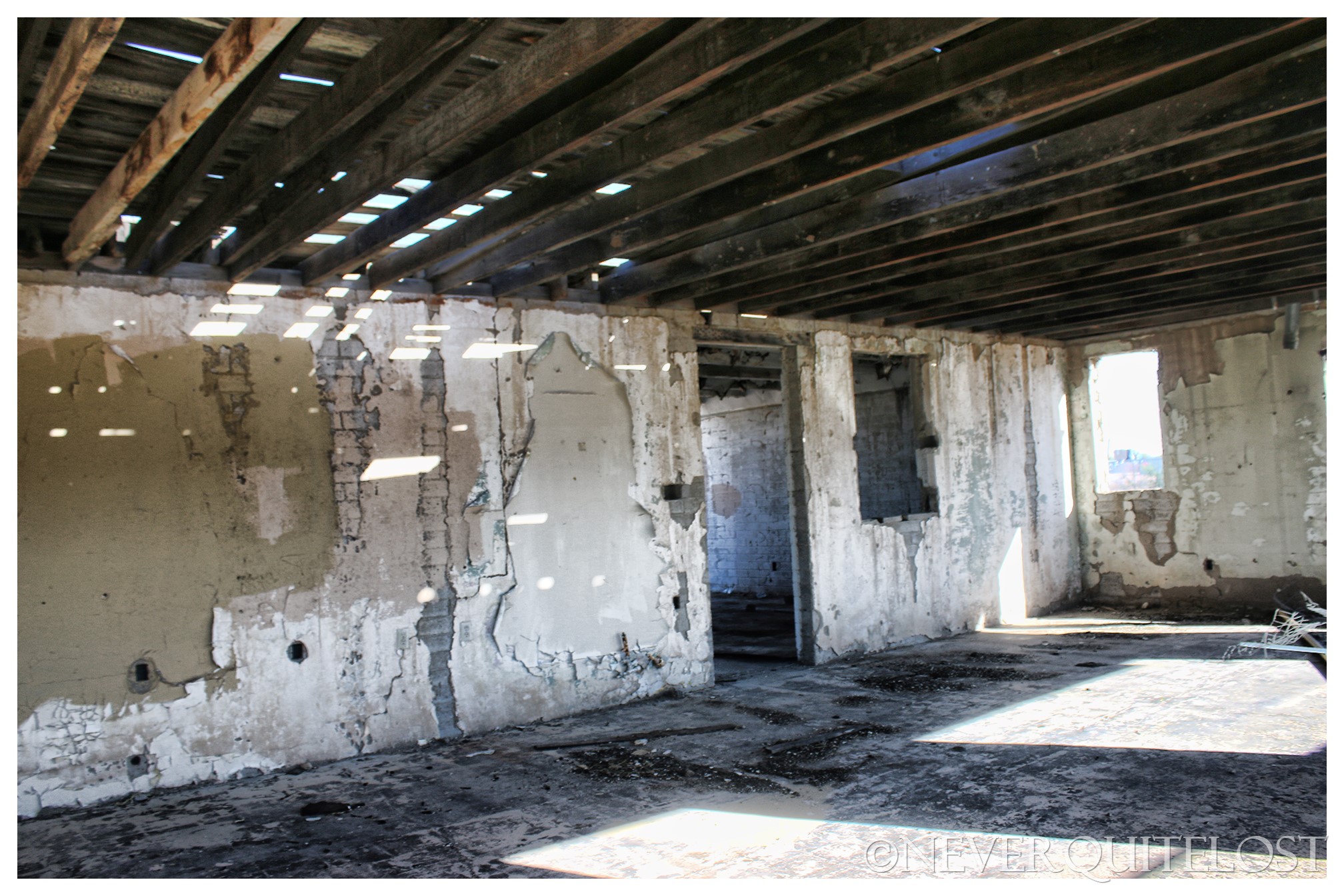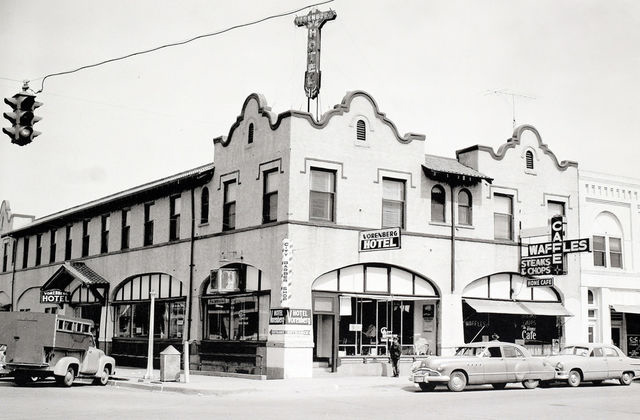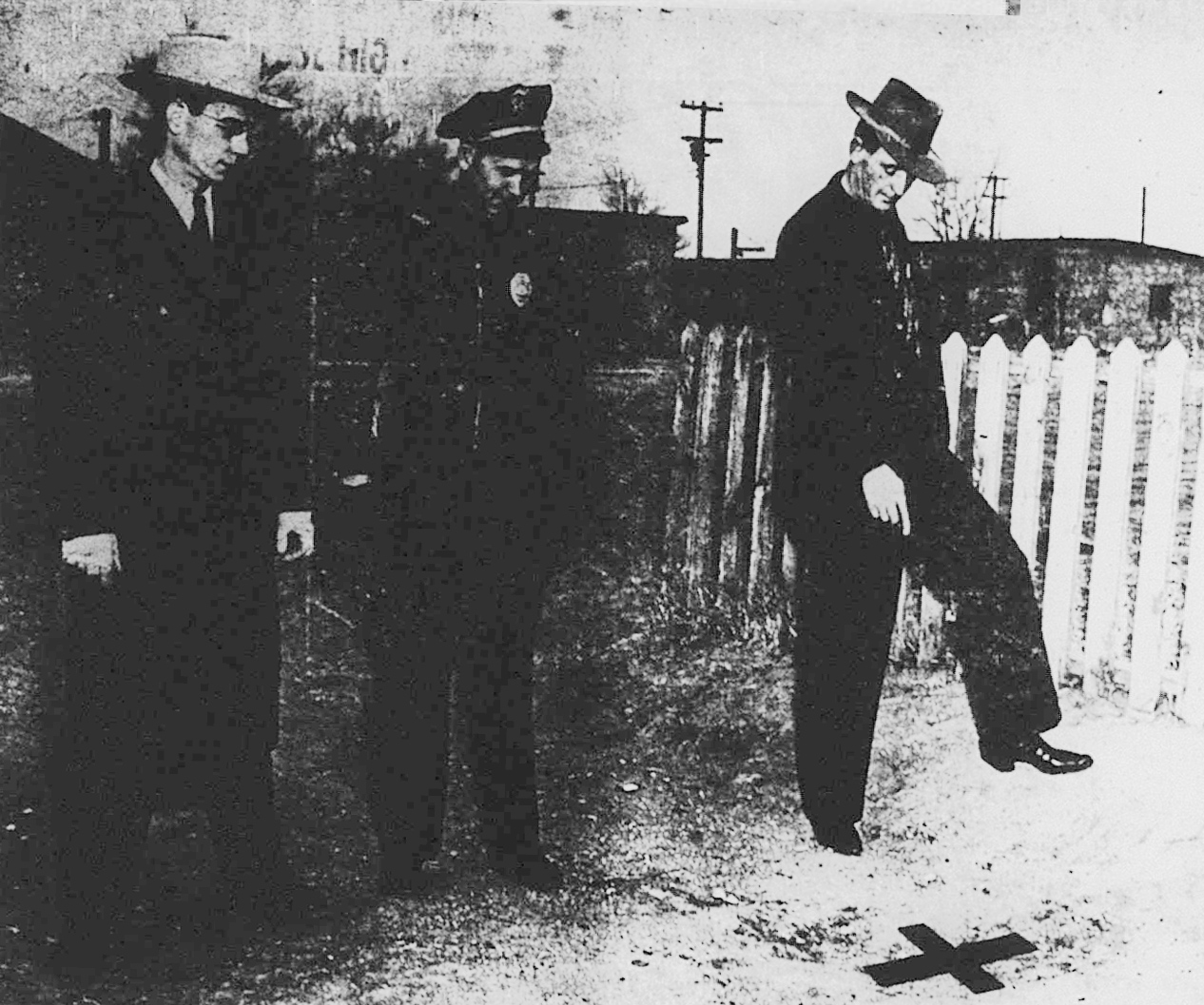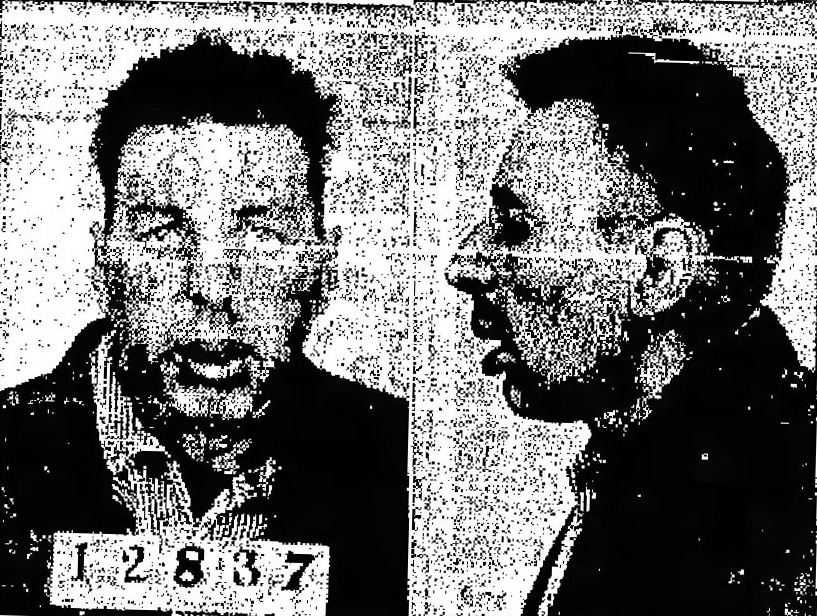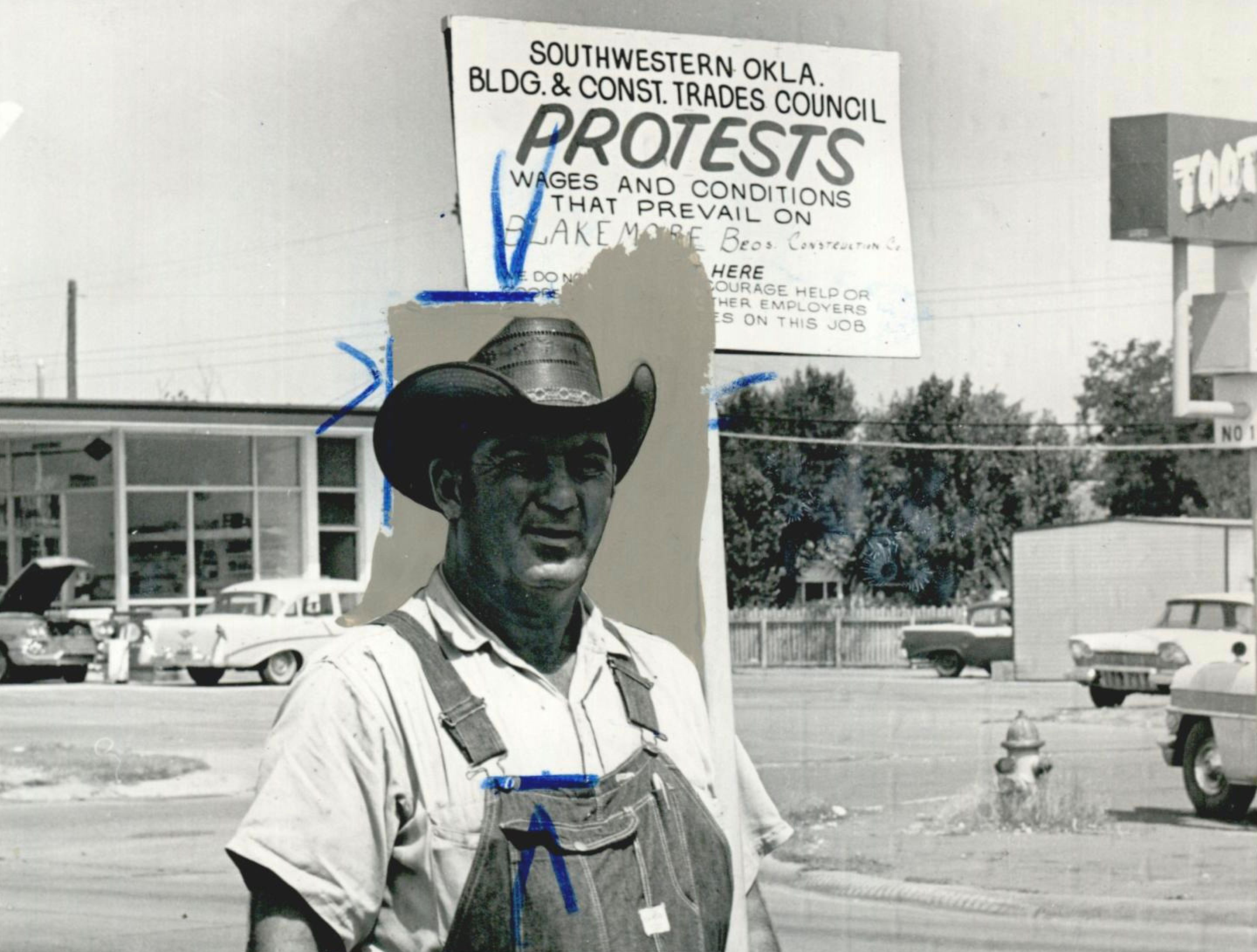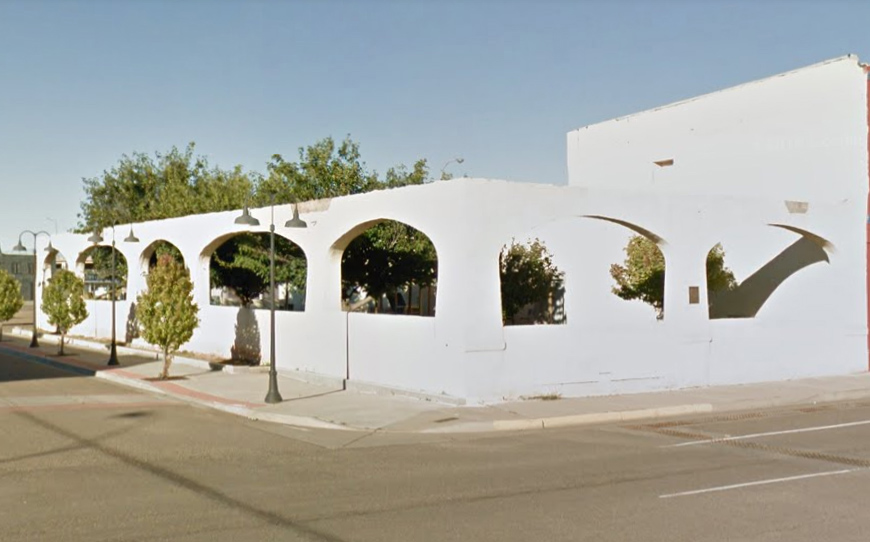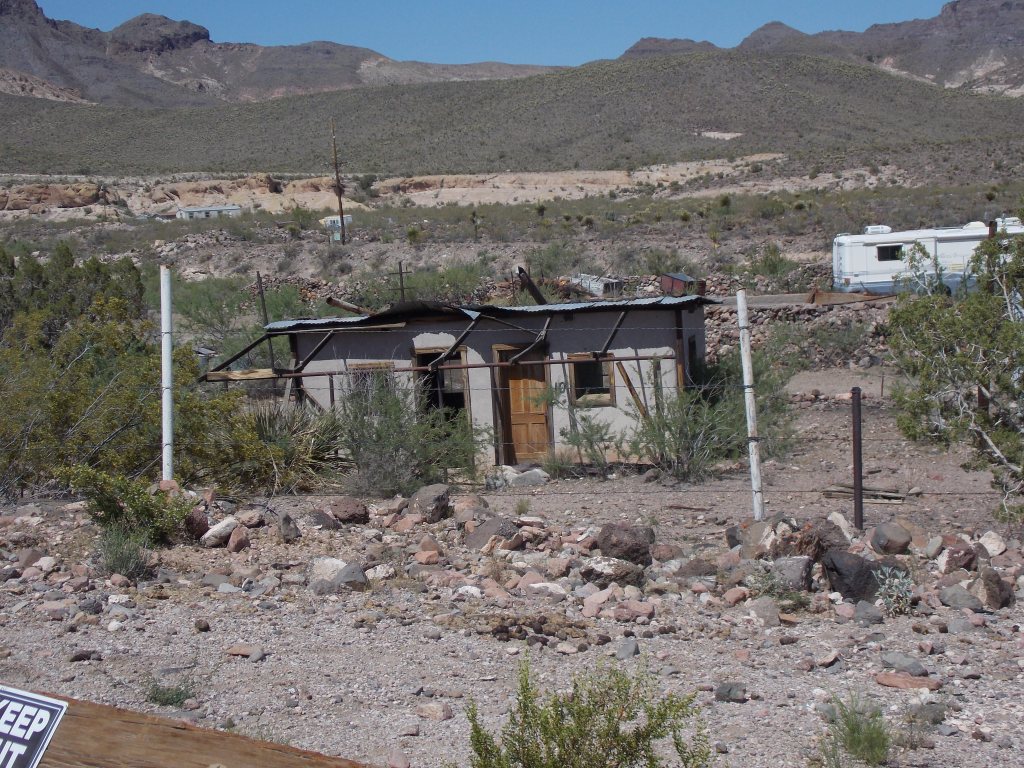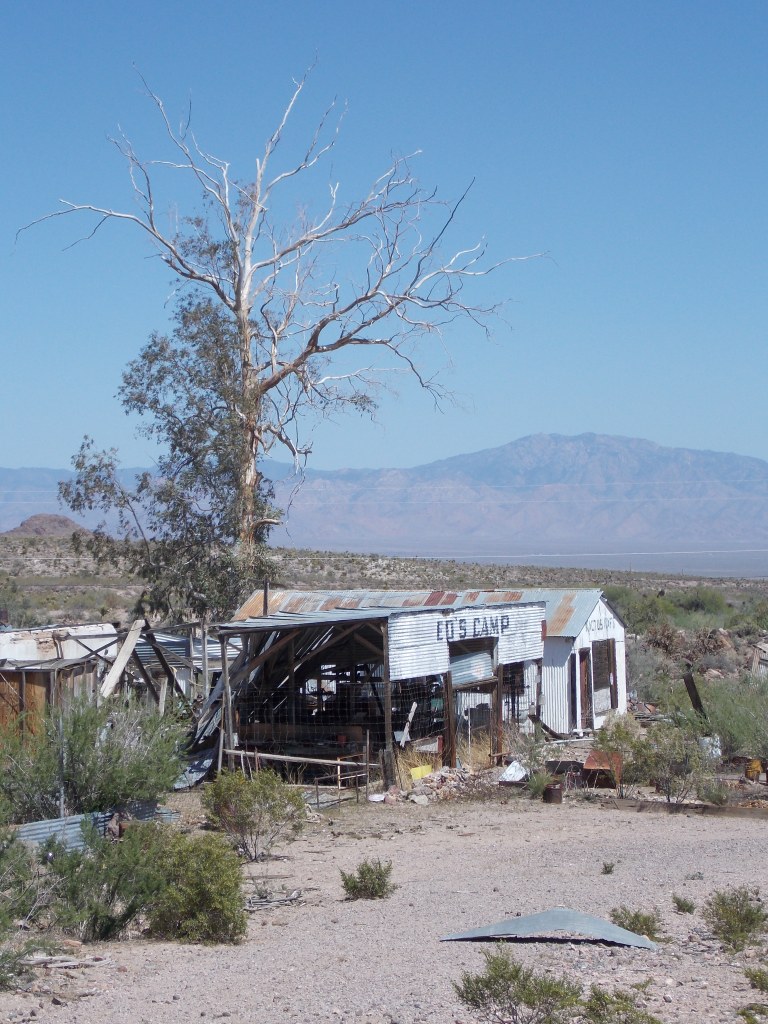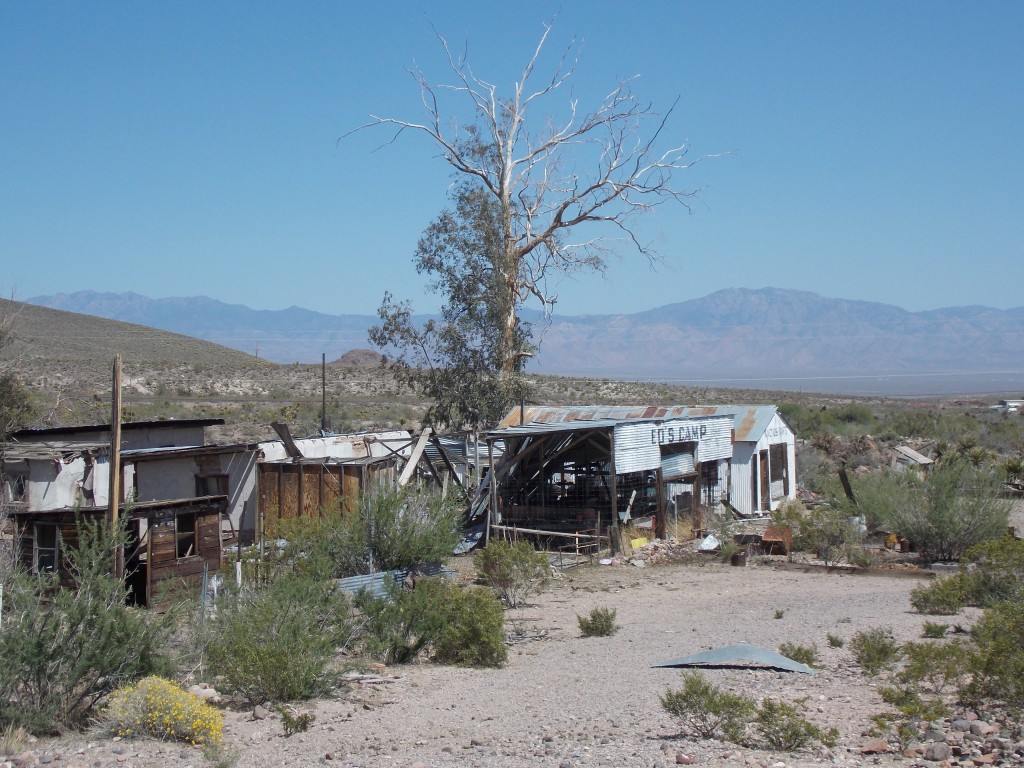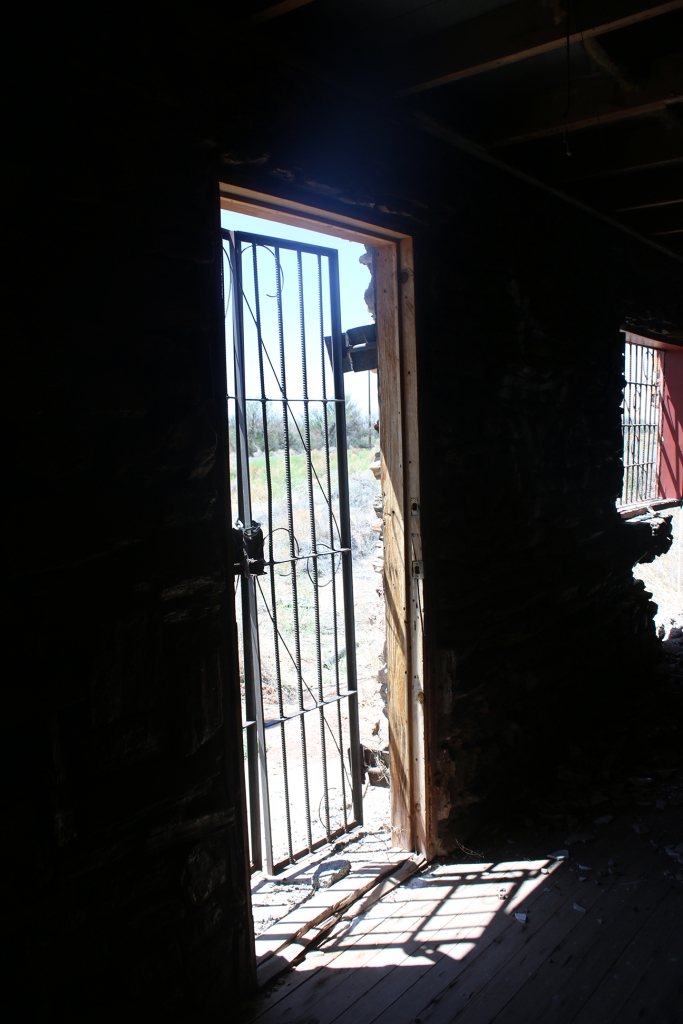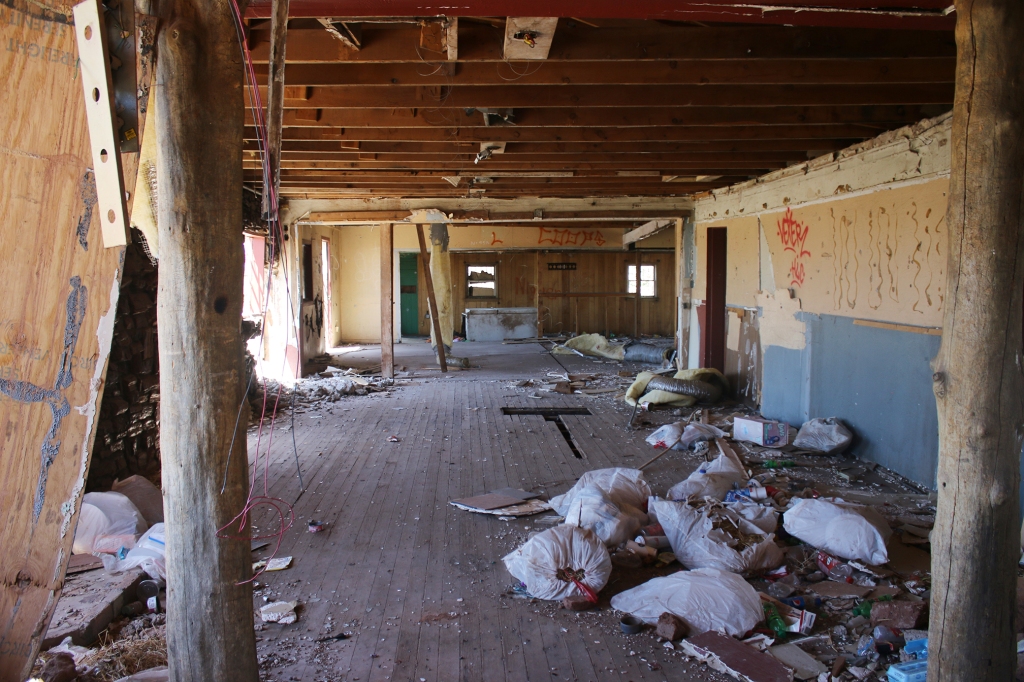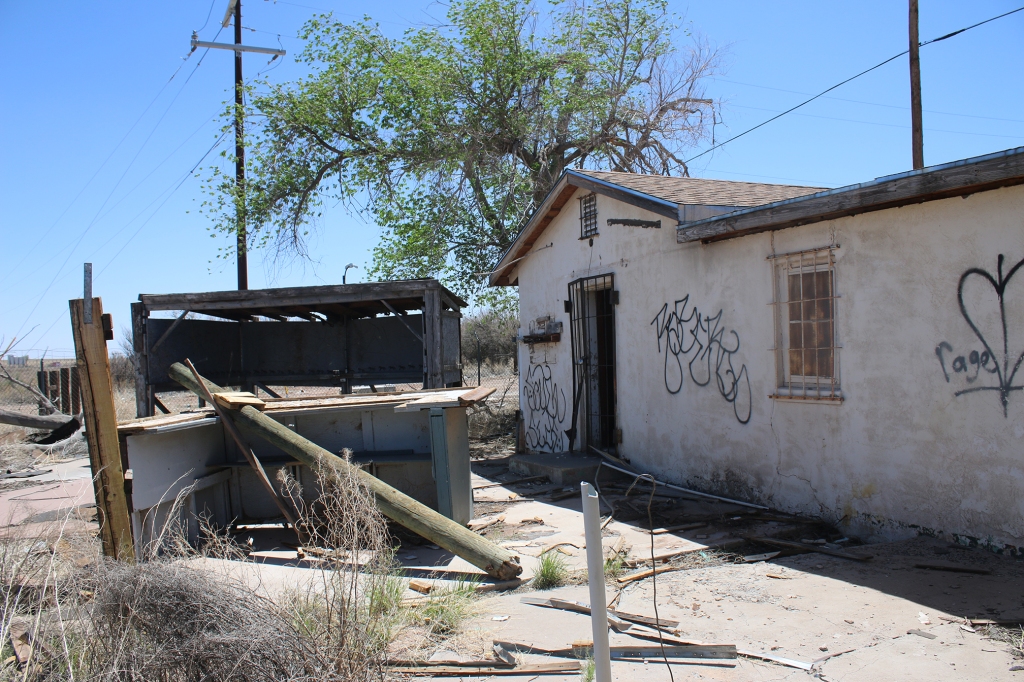
Gladwell Grady ‘Toney’ Richardson. Everything we know about the Apache Death Cave comes from this man.
In 1926 the tiny settlement of Two Guns, Arizona, was rocked by the killing of Earl Cundiff by Harry ‘Indian’ Miller. That episode is well documented but an enduring myth associated with Two Guns is far more nebulous and less easy to prove. That legend concerns the so-called Apache Death Cave.
As the story goes, in 1878, Apaches had raided two Navajo camps, killing everyone but three girls who were kidnapped. Other Navajo warriors attempted to follow the Apaches but were mystified when they appeared to vanish into thin air. Then, while scouting along the edge of Canyon Diablo, they noticed voices from beneath them and warm air coming up from a fissure in the ground. They quickly realised they were above a cave in which the Apaches, their horses and possibly the three Navajo girls were hidden.

Looking across to the famous cave.
They found the mouth of the cave and lit a fire intending to smoke out their enemies. Those who tried to escape were killed and when it was found that the Navajo girls were already dead, it was decided to kill all the Apaches in the cave in revenge. After those trapped in the cave had used all their water in an attempt to put out the flames, they cut the throats of their horses to use the blood to douse the fire. But, as the corpses of their horses piled up against the opening and the Navajo continued to fuel the flames with sagebrush, some forty-two Apaches are said to have died in the cave.

Harry ‘Indian’ Miller – unfairly blamed for the Apache Death Cave story?
Did it happen? At this length of time there is really no way of telling and there is considerable doubt as to how much the tale has been rewritten, exaggerated and embellished. What is clear is that Harry Indian Miller has been unfairly tarnished in many accounts and histories of Route 66 with starting and promulgating the myth of the ‘Apache Death Cave’. While it is true that Miller used the cave as a tourist attraction, he advertised it as ‘Underground Dwellings’ and probably fitted out the cave with suitable stage dressings to entertain visitors. However, there’s no evidence that the cave was ever used as a dwelling, which casts doubt on the idea of it being regular living quarters for the Apache.

A postcard of the Apache caves from the 1930s. Note no mention of death.
All photographs that exist of Two Guns during Miller’s tenure show the attraction advertised as the APACHE CAVES or the MYSTERY CAVE. Many accounts accuse Miller of clearing out the caves and selling Apache skulls but there is one fact which goes against this idea; Miller claimed to have Apache blood (whether full blood or half blood depends on which account you read) and while that claim is perhaps a little tenuous, as such he would have been unlikely to sell the bones of his ancestors. In late 1926, he and his friend and fellow trader Joe Secakuku announced a plan to build a dance floor in the cave, although this never came to pass. It would be forty feet by fifteen feet and for the use and entertainment of not only tourists but local Winslow residents. Had Miller believed – or even known – of the existence of the Death Cave story would he have turned the cave into first a tacky tourist attraction and secondly a dance hall? And even if he had been prepared to compromise his claimed heritage, would Chief Joe, a full blood Hopi, have gone along with the plan?

A later postcard, also with no mention of any death caves.
Perhaps the most compelling evidence towards the story of the Apache Death Cave being an exaggerated and embroidered (if not invented) story is that the facts emanate from one source; Gladwell Grady Richardson.
Thanks to the work of Marshall Trimble, Arizona’s state historian, one Richardson tale has already been debunked. For years, people have spoken in awe of Canyon Diablo, a town on the edge of the canyon from which it took its name and a mile or so from Two Guns.
Originally a railroad camp, Canyon Diablo had a main street called Hell Street, fourteen saloons, ten gambling houses, four brothels and two dance halls, many of which stayed open twenty-four hours a day. It was said to be a lawless and dangerous place with a Boot Hill cemetery which was filled within a year with those who had suffered a violent demise. Six town marshals died in quick succession, the first lasting just four hours, the longest serving surviving a month. It was a place that made Tombstone seem like the most sedentary of suburbs.
There’s only one problem with this picture of Canyon Diablo: It never existed.
It was virtually all the imagination of Gladwell Richardson. In a time where very few documents existed – there is, for example, no record of a Canyon Diablo newspaper in the railroad camp – Richardson somehow magically managed to not only know how many saloons and brothels there were in the town, but was able to name them, too. “Nearly everything you’ve read is fiction,” says George Shaw, an archivist at the Arizona State Railroad Museum. “Never happened.” Richardson was a prolific author of Western stories which he penned under a variety of pseudonyms and it’s all too likely that his ability for conjuring up stories spilled over into his so-called narrative of Canyon Diablo.
Richardson also had a personal connection with Two Guns. He had worked in trading posts since he was a young boy and, in 1950, when his father SI Richardson, bought Two Guns, Gladwell and his wife Millie ran the place for several years and it was while living and working at the trading post that Richardson began writing a small book called Two Guns, Arizona. Published in 1968 and long out of print, this small tome appears to be from where the legend of Canyon Diablo and the embellished story of the cave originate. In his book, Richardson writes of Canyon Diablo; ‘For the brief span of its vicious life, more famous places like Abilene, Virginia City and Tombstone could not hold a candle to the evil of this end-of-the-railroad’s depravity. Murder on the street was common. Holdups were almost hourly occurrences, newcomers being slugged on mere suspicion that they carried valuables.’
The truth was that the town, like most railroad camps, was a place where people worked hard, perhaps had a little too much to drink on a Saturday night, but were too careful of their jobs to participate in much mayhem or murder. However, that doesn’t make for quite such an exciting story! By the time that Richardson wrote his version of history, the town had been gone for almost eighty years, meaning that there would have been very few people who had experienced Canyon Diablo first-hand, and so his account became universally accepted.
Richardson’s book also appears to be the source for the much-repeated story that, during the winter of 1879, the canyon was a hideout for Billy the Kid and his gang. Once again, it’s a great tale but the likelihood of it being true is extremely low. Robert M Uttley in his definitive biography of William H Bonney has The Kid in his home territory of Fort Sumner, New Mexico, throughout the time that Richardson claimed he was hiding stolen horses in the canyon.
Two Guns, Arizona also provides an exciting and entertaining narrative of the events of the Apache Death Cave, containing facts that can be found nowhere else. Indeed, it appears to be the sole history of the events of June 1878 for every subsequent retelling has drawn upon either the facts published in this book or in a longer article which appeared in Big West Magazine in 1967. The author of this piece was Maurice Kildare – and Maurice Kildare was one of Richardson’s many pseudonyms.
Although he was regarded as an expert on Western history – a notion promulgated by his many Western novels and by Richardson himself – Two Guns, Arizona was only one of two works of non-fiction that he wrote in his lifetime. The other was a work which Richardson clearly preferred to forget.
On 23rd April 1923, special officer JS Sullivan of the Arizona Eastern railroad arrested a young man in a boxcar at the Phoenix railroad yards early in the morning. It was a common enough incident and Sullivan had no cause to suspect the man of anything other than vagrancy. But a search at the police station of the man’s meagre possessions uncovered a diary in which the vagrant, who was identified as Gladwell Grady Richardson, had written a vivid first hand narrative of how he had killed a rabbi in a San Francisco hotel and then deserted the navy.
Richardson claimed it was simply a story he had been writing to keep himself amused which might have been more believable had Phoenix officers, upon investigation, not discovered that, on 3rd April 1923, a Rabbi Alfred G Lafee had indeed been beaten to death in the Gates Hotel on Fillmore Street in San Francisco. The details of the slaying corresponded to Richardson’s account in every way.

The Gates Hotel where Richardson killed Rabbi Lafee.
Nonetheless, Phoenix officers appear to have believed Richardson’s explanation that the diary was just a story. He stuck so consistently to this that Phoenix Chief of Police, Oscar Roberts, publicly stated that he felt the diary was a figment of the nineteen-year-old deserter’s imagination and he was an unfortunate victim of circumstance. It must have been embarrassing for the police chief when, the following day after this statement, Richardson changed his tune and made a full confession, waiving his right to be extradited to California.
Two days later he told his story before a grand jury. On 3rd April, Richardson had gone ashore from the USS Vigilant to Golden Gate Park where he had met a stranger to whom he referred to his diary as “the Jew”. His diary spoke of the man as “kind of nervous for some unknown cause”; the young Richardson may have been very naïve – or wished to appear so – for he accepted the stranger’s invite to take in a show and then spend the night at a local hotel.

The Gates Hotel today, renamed as the Fusion although basically unchanged on the exterior.
Richardson wrote in his account: “After the show we went to the Gates Hotel but he registered as Mr Lane. About 3.30am I was suddenly awakened by the Jew, my hand fell off the bed coming into contact with a cuspidor. I turned it on its side and emptied it. I swung the cuspidor and struck the Jew on the head. The Jew swung with his fist and hit me on the jaw. I then swung the cuspidor twice in rapid succession. The blood on my hands was bloody. I got up and turned the lights on. As I did my left hand left a print on a wall. The Jew was unconscious. At first I thought he was dead. He was breathing heavily and his head was between the bars of the head of the bedstead. I washed the blood from my arms and hands, put on my clothes, opened the door and walked out. The clerk was there so I lit a cigarette and asked him something about the weather. My voice sounded kind of queer, that was the only emotion I had”
Back on the USS Vigilant, Richardson learned two days later that not only was the man a rabbi, but he was now a dead rabbi. He told a couple of people what he had done, a friend called Frank and a woman called Alice with whom he had had dinner two nights later and then he decided to go on the run from Goat Island Naval Training Station. As his diary relates, this action caused him more angst than the murder. In the entry of April 7th, he wrote: “The rabbi is dead. So now in the eyes of the law I am a murderer. Can’t say I feel like one. I’m also a deserter from the navy, that’s what I’m worried about. Wired dad to send $75. Discarded my bright, new uniform yesterday for a pair of overalls, shirt and sweater. I look like a bum now.”
Pleading self-defence as the victim of an ‘unnatural attack’, Richardson went through his story again in front of the grand jury and, on 15th May 1923, that grand jury refused to indict him on a charge of murder, holding that he was justified in defending himself under the circumstances. This should have automatically closed the case but Richardson was referred to the Superior Court which, on 29th June 1923, confirmed the grand jury’s decision and dismissed the charge of murder on the grounds, quite amazingly, of insufficient evidence.
As a deserter, Richardson should have been placed under immediate arrest by a naval guard but, according to contemporary newspaper reports he was allowed to leave the court on his own and voluntarily surrender to a naval assembling station on Yerba Buena island. It’s to be presumed that he did this; although that naval career appears to have ended a few months later, the foreword of Navajo Trader stating that he remained on active duty until 1924 and then was recalled into military service after Pearl Harbour, serving in Arizona, Indiana and the South Pacific. Then again, that same foreword also contains no whisper of his troubles in San Francisco in 1923.
In fact, Richardson appears to have successfully expunged any mention of the murder of Rabbi Lafee from his subsequent life, going on to be an organiser of the Flagstaff Indian Pow Wow and author of almost three hundred works of fiction. The tourists that he did welcome to Two Guns were generally those who were seeking out their favourite author and he continued to run the trading post until 1962 when he sold the business to Ida Ferne Jacobs Rawlinson who, just a year later, sold up to Benjamin F Dreher. Richardson dedicated his book to Dreher; it may have been a genuine desire on Richardson’s part to record the history of the place as he saw it, or it may have been commissioned by Dreher as publicity for the redevelopment of Two Guns. The fact is that book published in 1968 and an article written under one of his many pseudonyms, are the sole source of information on the now much-repeated story. And the first time that anyone had heard of the Apache Death Cave…

Gladwell Grady ‘Toney’ Richardson. Unreliable witness?
